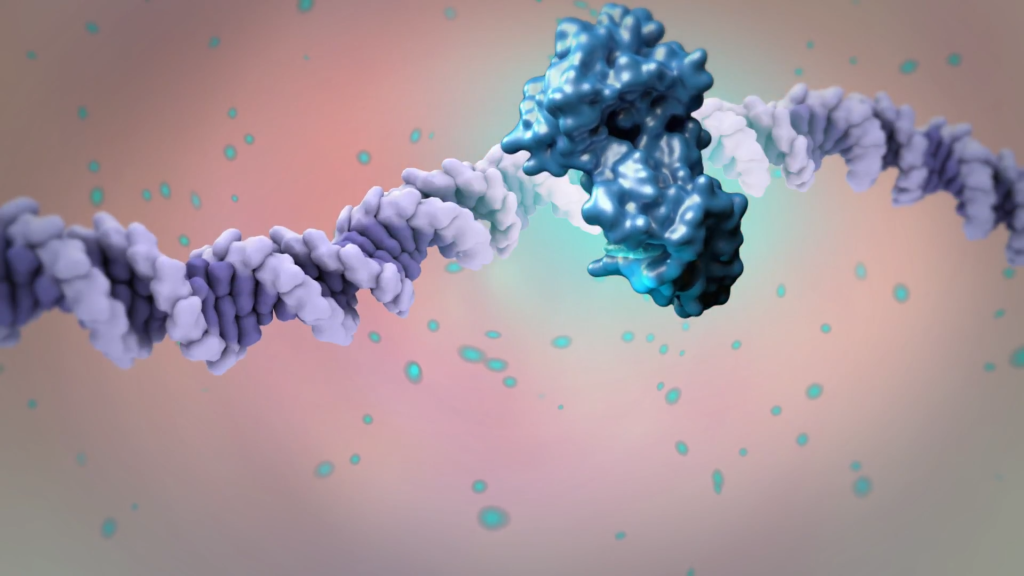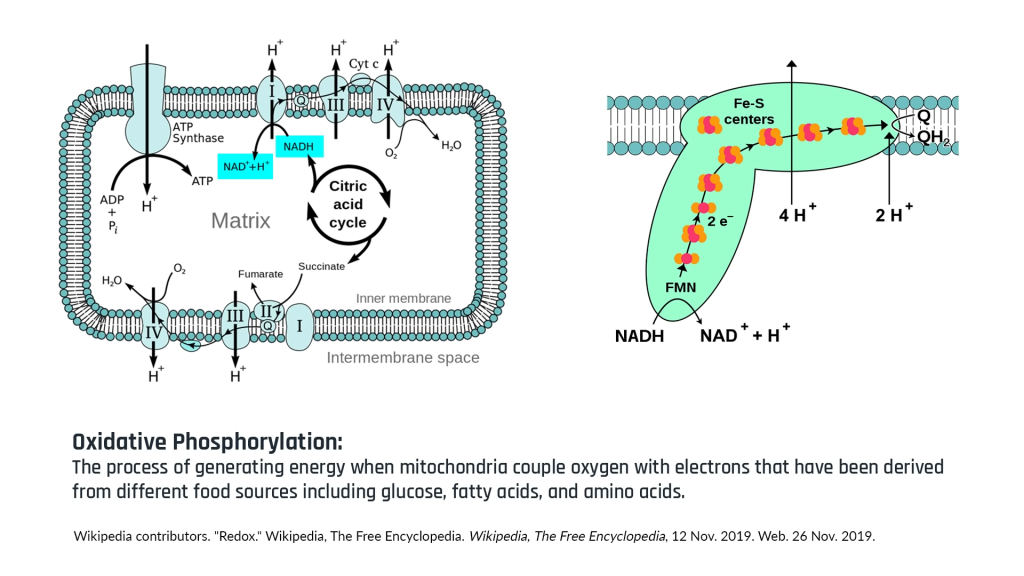How NAD+ Plays a Role in DNA Repair
August 21, 2023

NAD+, pronounced "NAD plus," may sound like a secret code or a futuristic energy drink, but it's actually a pretty vital molecule in our bodies. So, what exactly is this NAD+ all about? And how does it play a role in the intricate process of DNA repair? Buckle up, because we're about to embark on a journey through the fascinating world of NAD+ and its connection to DNA repair.

Understanding the Basics of NAD+
Before we dive into the nitty-gritty of DNA repair, let's take a moment to unravel the mystery that is NAD+. NAD+ stands for Nicotinamide Adenine Dinucleotide. Don't let the complex name intimidate you; it's just a molecule made up of two simple building blocks: nicotinamide and adenine.
But what exactly is nicotinamide? Well, it's a form of vitamin B3 that plays a crucial role in various metabolic reactions in the body. Adenine, on the other hand, is one of the four nitrogenous bases that make up the DNA molecule. So, when these two components come together, they form the powerful NAD+ molecule.
So why is NAD+ important? Well, it serves as a coenzyme in various biological processes, including DNA repair. You can think of it as a trusty sidekick, helping out the superheroes of your cells in their quest to maintain genetic integrity.
What is NAD+?
NAD+ is a superstar when it comes to cellular functions. It acts as a coenzyme, meaning it partners up with other enzymes to catalyze biochemical reactions. It's like Batman teaming up with Robin – they're stronger together!
But how does NAD+ actually work? Well, when a biochemical reaction occurs in the body, NAD+ accepts and carries electrons from one molecule to another. This transfer of electrons is crucial for the reaction to proceed smoothly. In other words, NAD+ acts as an electron carrier, shuttling electrons around like a busy bee.
Furthermore, NAD+ exists in two forms: NAD+ and NADH. NAD+ is the oxidized form, while NADH is the reduced form. Think of NAD+ as the go-getter, fueling reactions, while NADH is the chilled-out version, waiting to be re-energized.
The Biological Importance of NAD+
NAD+ is not just a fancy molecule with a snazzy name. It's biologically crucial! Without NAD+, a multitude of cellular processes would grind to a halt. It's involved in energy production, metabolism, and, you guessed it, DNA repair.
In terms of energy production, NAD+ plays a key role in cellular respiration, the process by which cells convert glucose into usable energy. It acts as a coenzyme in the electron transport chain, a series of reactions that generate ATP, the energy currency of the cell.
When it comes to metabolism, NAD+ is involved in various metabolic pathways, such as glycolysis and the citric acid cycle. These pathways break down molecules and extract energy from them, allowing the cell to function properly.
And of course, we can't forget about DNA repair. NAD+ is essential for repairing damaged DNA, which can occur due to various factors such as UV radiation, chemicals, and errors during DNA replication. Without NAD+, our cells would struggle to fix these errors, leading to potentially harmful mutations.
So, to put it simply, NAD+ is like the MVP (Most Valuable Player) in the game of life. It's involved in crucial cellular processes that keep our bodies functioning properly. Without NAD+, our cells would be like a ship without a captain, lost at sea.
The Intricacies of DNA Repair
Now that we have a good grasp on NAD+, let's unravel the mystery behind DNA repair. Your DNA is pretty amazing; it contains all the instructions necessary for your cells to function correctly. But, like any masterpiece, it can get damaged.
The DNA Repair Process
Imagine your DNA as a well-organized library. Every now and then, a book may get damaged. When that happens, your cells spring into action to repair the damage and maintain the integrity of the library.
DNA repair is a complex process that involves a range of mechanisms. It's like a team of superheroes working together to fix what's broken. One of these superheroes is none other than NAD+.
When DNA damage occurs, specialized proteins detect the problem and initiate the repair process. These proteins act as the vigilant librarians of your DNA library, constantly scanning for any signs of damage. Once a problem is identified, a cascade of events is set in motion.
First, the damaged DNA strand is recognized and marked for repair. This marking ensures that the repair machinery knows exactly where to focus its efforts. Think of it as placing a bright red sticky note on the damaged book in your library, making it easy to find and fix.
Next, the repair machinery is activated. It's like calling in the maintenance crew to fix the damaged book. Different repair mechanisms are employed depending on the type of damage. For example, if there is a break in the DNA strand, a process called "non-homologous end joining" is initiated to reconnect the broken ends.
NAD+ comes into play during the repair process by acting as a coenzyme. It helps facilitate the enzymatic reactions involved in repairing the damaged DNA. Just like a trusty sidekick, NAD+ supports the repair superheroes, ensuring that they can carry out their tasks effectively.
Different Types of DNA Damage
There are many ways DNA can be damaged – think of it like a mischievous prankster wreaking havoc in your library. Some common types of DNA damage include breaks, chemical modifications, and even ultraviolet radiation from sunlight.
Breaks in the DNA strand can occur due to various factors such as exposure to harmful chemicals or radiation. These breaks can disrupt the normal functioning of your cells and lead to genetic mutations if not repaired promptly. Fortunately, your cells have evolved intricate repair mechanisms to deal with such breaks.
Chemical modifications of DNA can also occur, altering the structure and function of the DNA molecule. These modifications can be caused by environmental factors or even by normal cellular processes. The repair of chemically damaged DNA involves specialized enzymes that can remove and replace the modified bases, restoring the integrity of the DNA sequence.
Ultraviolet (UV) radiation from sunlight is another common source of DNA damage. UV radiation can cause the formation of abnormal DNA structures called "thymine dimers." These dimers can interfere with DNA replication and transcription, leading to errors in protein synthesis. To counteract this damage, your cells employ a process called "nucleotide excision repair," which involves the removal and replacement of the damaged DNA segments.
Throughout evolution, organisms have developed an impressive arsenal of repair mechanisms to counter these damages. These mechanisms work together like a well-coordinated team, ensuring that your DNA remains intact and functional.
NAD+ plays a crucial role in many of these repair mechanisms. It acts as a cofactor for enzymes involved in DNA repair, providing the necessary energy and chemical groups for efficient repair processes. Without NAD+, the repair superheroes would struggle to carry out their duties effectively, and your DNA library would be at risk of permanent damage.
So, the next time you marvel at the complexity of DNA repair, remember the intricate teamwork involved and the important role played by NAD+. It's a fascinating process that ensures the preservation of your genetic information and the proper functioning of your cells.
The Connection Between NAD+ and DNA Repair
So, what exactly is the relationship between NAD+ and DNA repair? Well, it turns out that NAD+ is not content with just being a passive observer; it likes to get involved and make things happen.
NAD+ in DNA Repair Mechanisms
One of the ways NAD+ contributes to DNA repair is through a process called base excision repair. Without getting too deep into the technical weeds, this mechanism involves removing and replacing damaged DNA bases. NAD+ steps in to assist the enzymes involved in this process, ensuring that DNA gets repaired properly.
Additionally, NAD+ has been found to interact with other proteins involved in DNA repair, like PARPs (Poly ADP-ribose Polymerases). By partnering up with these proteins, NAD+ helps orchestrate the intricate dance of repairing damaged DNA strands.
The Role of NAD+ in DNA Damage Response
Imagine your DNA as a detective, searching for clues to identify the culprit responsible for the damage. When DNA gets damaged, it sets off a series of signals within your cells, known as the DNA damage response. This response is like calling in the reinforcements to fix the damage. And guess who plays a starring role in this response? That's right, our heroic friend, NAD+.
NAD+ acts as a signaling molecule, relaying messages within your cells and activating various repair pathways. By doing so, it ensures that DNA damage is promptly addressed and that the integrity of your genetic blueprint is preserved.
The Impact of NAD+ on Aging and Longevity
Now that we know how NAD+ contributes to DNA repair, let's explore its impact on aging and longevity. Aging is a natural process that affects all of us, but can NAD+ offer us a few extra candles on our birthday cakes?

NAD+ Levels and Aging
As we age, the levels of NAD+ in our cells tend to decline. Like a fading superhero, NAD+ might not be as readily available to support DNA repair processes. This decline has been linked to the decline in overall cellular function associated with aging.
But fear not! Researchers are looking into ways to boost NAD+ levels, potentially slowing down the aging process and improving cellular health.
How NAD+ Influences Longevity
NAD+ doesn't just wave its magic wand and grant us eternal youth, but it certainly has an influence on our longevity. By promoting DNA repair, NAD+ helps prevent the accumulation of DNA damage over time. This buildup of damaged DNA is believed to contribute to aging and age-related diseases.
So think of NAD+ as your friendly neighborhood repair crew, ensuring that your DNA remains in tip-top shape and helping you age gracefully.
Enhancing DNA Repair with NAD+ Supplementation
Now that you're convinced of the importance of NAD+ in DNA repair and aging, you might be wondering how to give this superhero molecule a little boost. Enter NAD+ supplementation!
The Science Behind NAD+ Supplementation
Scientists have been exploring ways to increase NAD+ levels through supplementation. By providing your cells with extra NAD+, you're essentially giving them a power-up, bolstering their ability to repair damaged DNA and maintain cellular health.
However, it's essential to note that more research is needed to fully understand the potential benefits and risks of NAD+ supplementation. So, until then, it's always wise to consult with a healthcare professional before embarking on any supplementation journey.
Potential Benefits and Risks of NAD+ Supplementation
The potential benefits of NAD+ supplementation go beyond DNA repair. Some studies suggest that it could enhance metabolism, promote brain health, and even mitigate the effects of certain age-related conditions. However, it's important to note that research in this field is ongoing, and individual results may vary.
As for the risks, while NAD+ supplementation is generally considered safe, it's vital to ensure that you're obtaining high-quality products from reputable sources. Additionally, as with any supplementation, it's always a good idea to consult with a healthcare professional to ensure it's suitable for you.
In conclusion, NAD+ is not just a random collection of letters and symbols – it's a vital molecule that plays a profound role in DNA repair. By partnering up with enzymes and activating repair pathways, NAD+ ensures that our genetic code remains intact. And who knows, with further research and exploration, NAD+ supplementation could hold the key to unlocking the secrets of aging and longevity. So, next time you hear the words NAD+, remember that this little superhero molecule is working tirelessly behind the scenes to keep your DNA in check. Excelsior!

 Back to Blog
Back to Blog